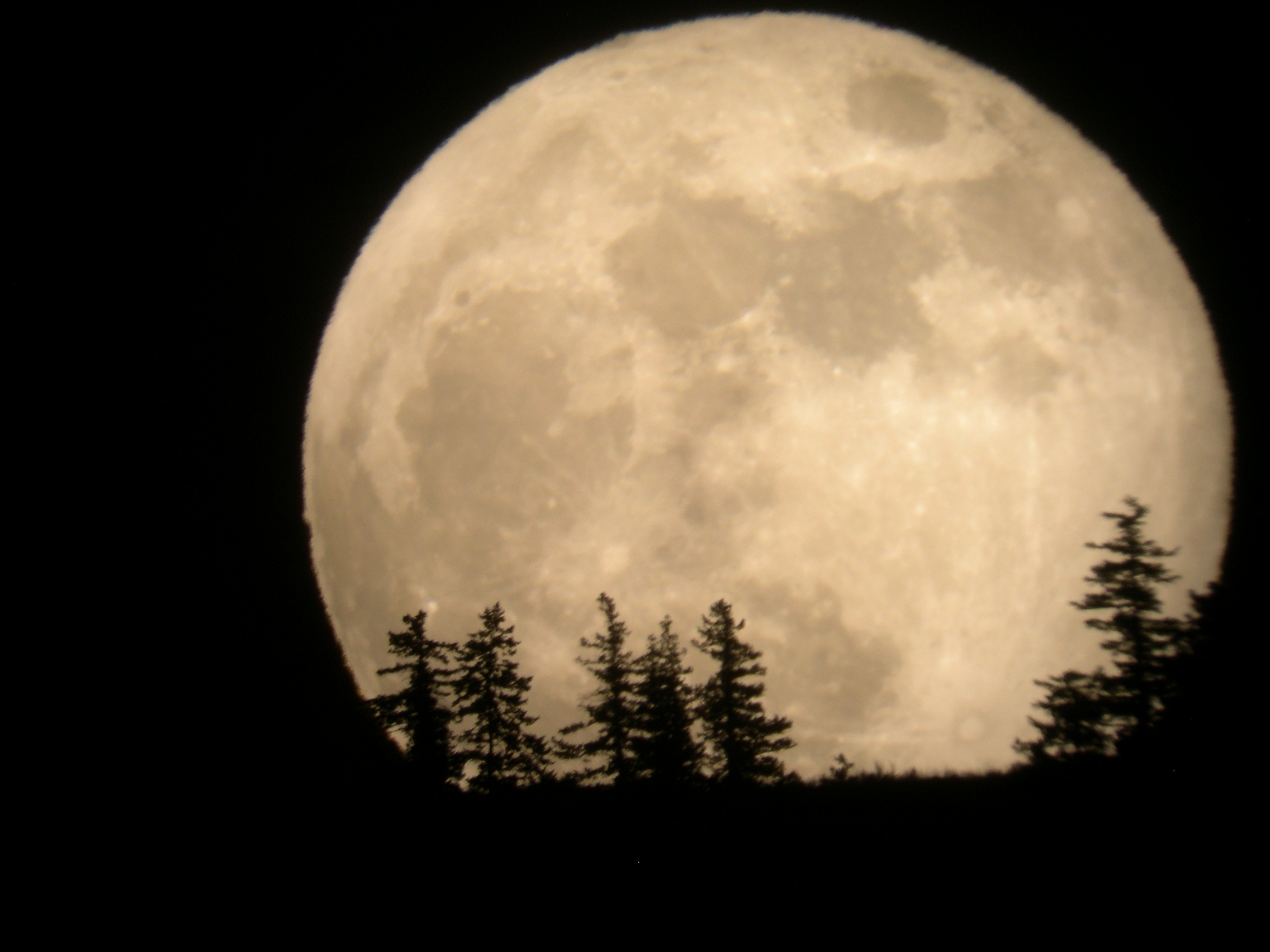If the other night you looked out at the moon, surely you noticed
that something was a little bit different. The moon seemed bigger and brighter
in the night’s sky. That wasn’t some optical illusion, but rather a phenomenon
known as a supermoon. While the term has
become more popular in recent years, it originally referred to a full or new
moon that occurred when the moon was within 90% of its closest approach to
Earth. Now it refers to a full moon that is simply closer to Earth than
average.
 |
| The Supermoon peering above the horizon |
The moon has an elliptical orbit around the Earth, meaning that it
is not always the same distance away from our friendly little planet. One side
of the orbit, known as perigee, is about 30,000 miles closer to Earth than the
other side, known as apogee. As the
Earth, moon, and sun perform their astrological dance around one another, at a
certain point in the movement of all three an event known as a syzygy
occurs. It’s the scientific name for
when the Earth, moon, and sun line up as the moon orbits Earth. Syzygy occurs when the moon is in perigee
(closer to the Earth) and in apogee (farther away). The supermoon occurs when the
moon is on the opposite side of the Earth from the sun and is in perigee.
The latest supermoon was just the other night on October 16, 2016
and there will be two more over the next two months on November 14 and December
14. November 14 will be a special
supermoon as moon will be at its closest point of perigee. It will be the
closest of the three and the closest the moon has come to the Earth in the 21st
century. It won’t come this close again until November 25, 2034. Not be left out, the supermoon on December 14
will block out the Geminid meteor shower set to occur that evening. Normally
the falling pieces of rock illuminate the night sky, but thanks to the
increased brightness of the moon, they’ll disappear from sight.
A
supermoon can be as much as 14% bigger and 30% brighter than a regular full
moon. Sometimes though, it’s hard to tell the difference. A 30% difference in
brightness can easily be masked by clouds or lights from homes or streetlights.
When the moon is high in the sky, it can be hard to tell the size difference
without a reference point to provide some measure of scale. When the moon is low in the sky, it can
create a ““moon illusion.” Near the horizon, it can appear larger when viewed
through trees, buildings, or other objects in the foreground. The effect is an
optical illusion, but it’s still impressive.
So
if you missed the supermoon this week, don’t worry there’s still two more
chances this year to observe this astronomical treat.

No comments:
Post a Comment